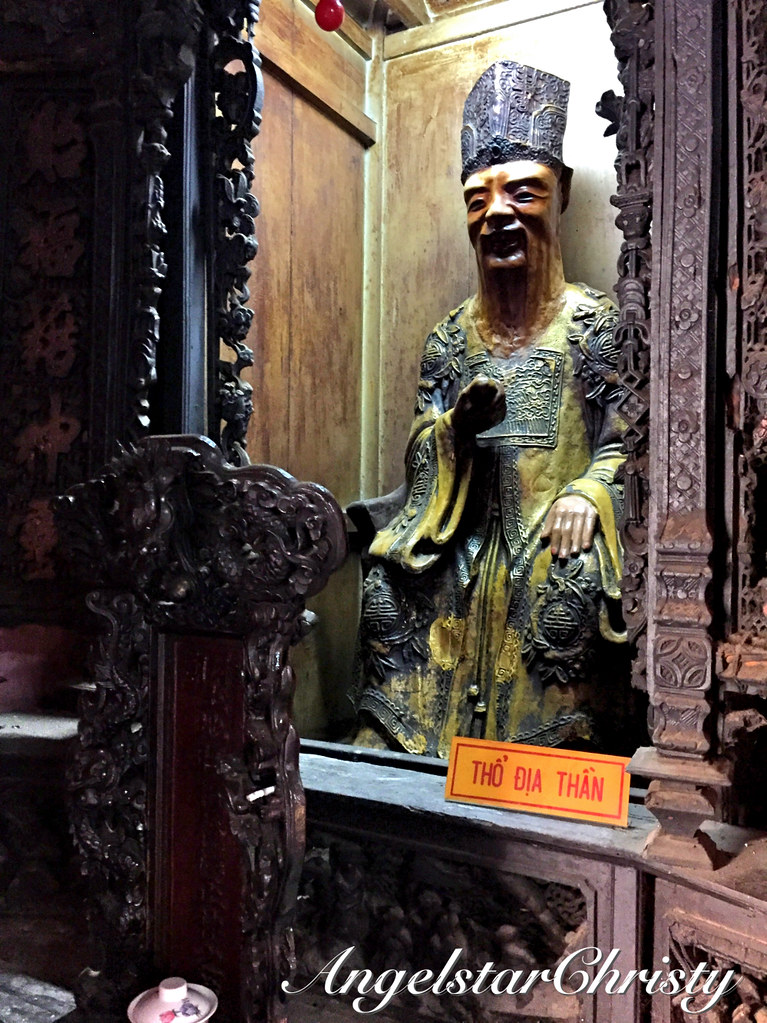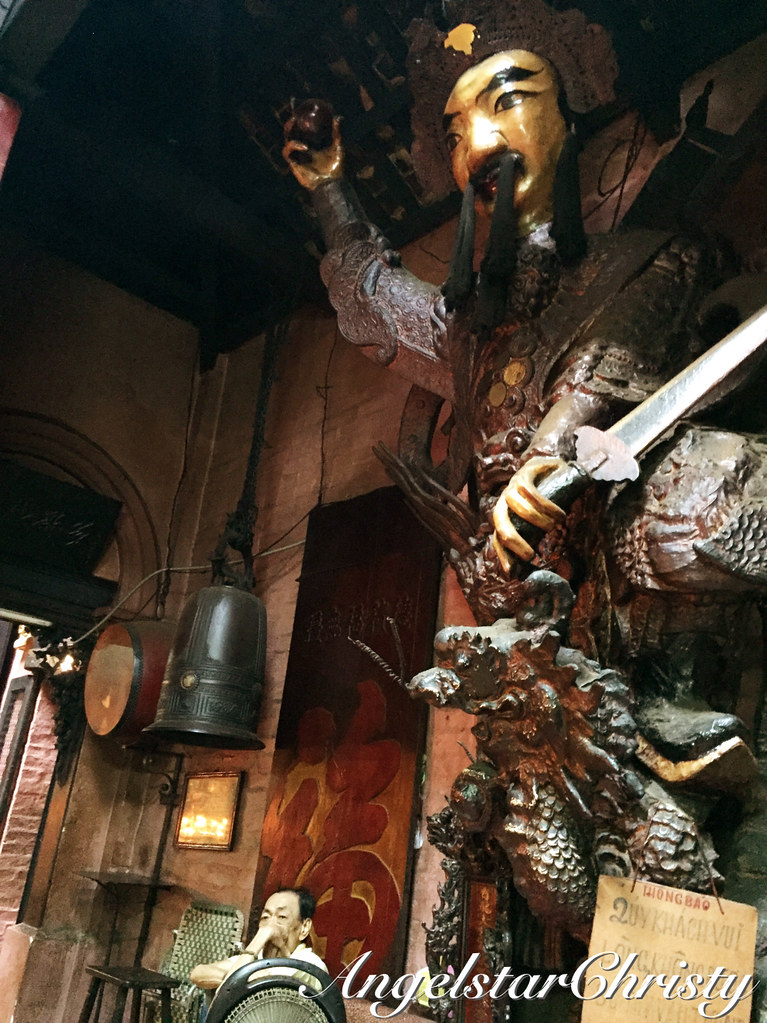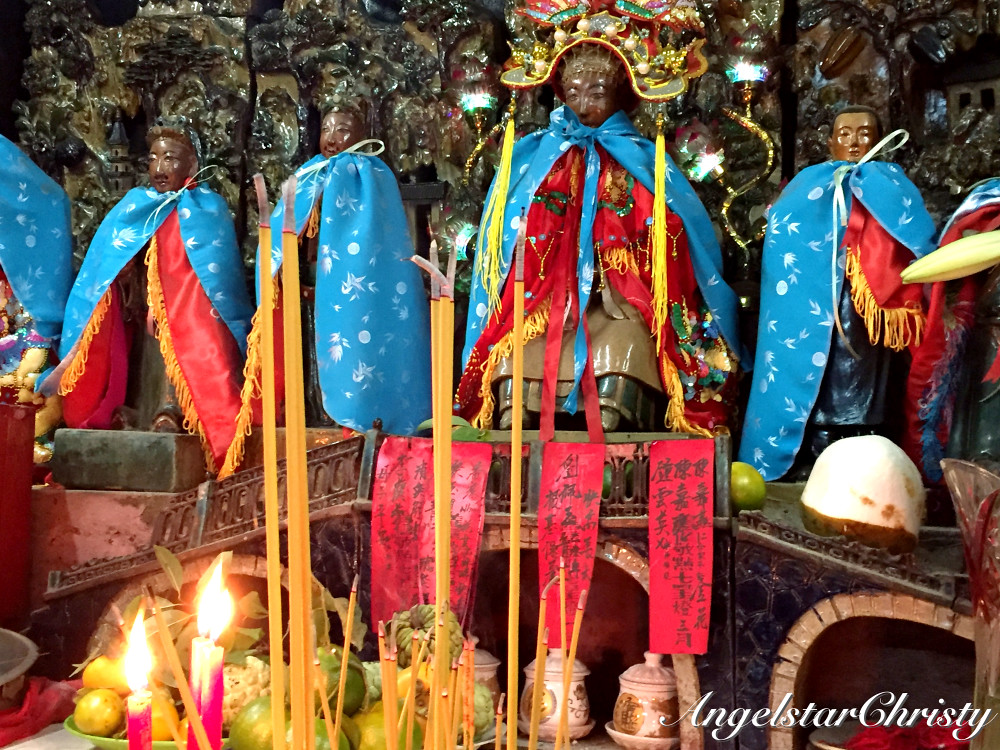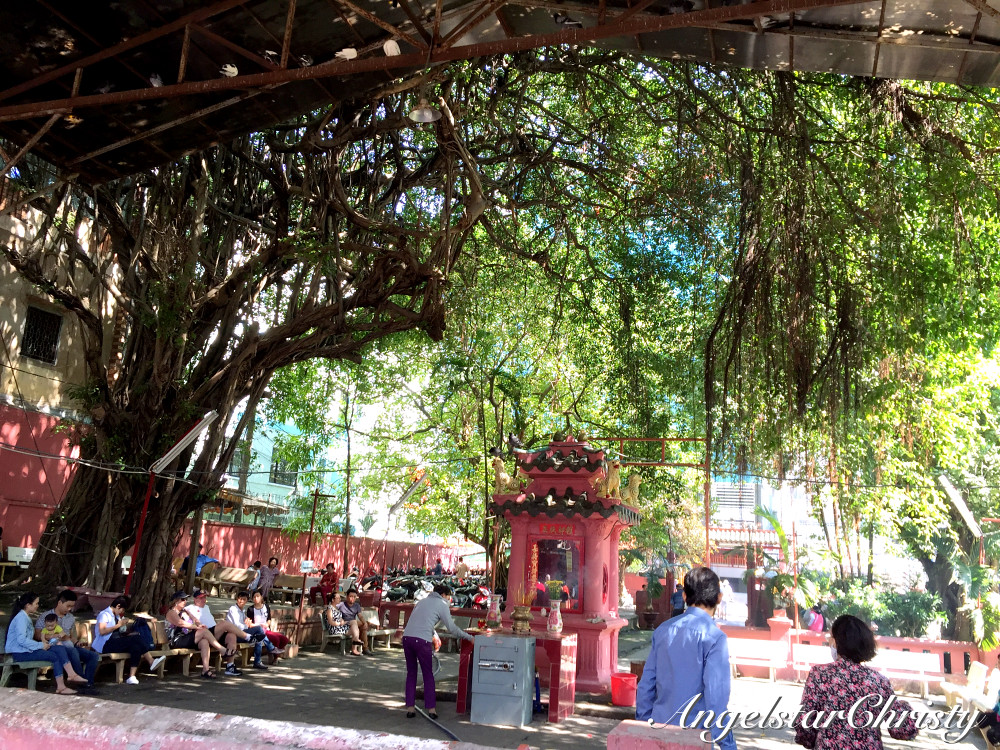
Rising smoke danced in a slow and graceful motion, twirling with the musky scent from the burning incense as they loomed over the arched roofs and spacious courtyard in a hazy overcast amidst the structured outline in the background.
It is quite a sight to behold, as one steps into this temple, greeted by the dated architecture and stone statues placed around the yard.
This is the welcome from Chua Ngoc Huang, or Phuoc Hai Tu in Chinese, 福海寺 (which translates to Luck Sea Temple), tucked within a row of shops in Ho Chi Minh City (formerly known as Saigon).
Officially, known as Ngoc Hoang Dien; or simply, the Jade Emperor Pagoda (玉皇殿), this is a Taoist place of worship built in honor of the Heavenly ruler, who reigned over the other deities in supreme sovereignty.
The temple is known by its many names, and there is slight diffusion over distinguishing the name of the temple by temple or pagoda as most of the other places of worship.
(Vietnamese distinctly categorize pagoda, or chua, which are solely for the worship of Buddha and are tended by saffron-robed monks; while temples, or Dien, are of Taoist in nature with the multitude of deities residing in them).
This is simply not so easily distinguishable in Jade Emperor Pagoda, or Jade Emperor Temple (the term Chua and Dien, were noticeably used in both official and unofficial names for the place).
(I will stick to the term temple, since this is more of Taoist in the nature of its worship).
The confusion is understandable, given the history of the temple which has been in place for more than a century.
This is a very old temple; one of the oldest and most important temples in Ho Chi Minh City and Vietnam.
It was the Chinese community; the early Chinese settlers in the city who built the temple between the years of 1892 to 1909, to honor the Heavenly ruler; the Jade Emperor.
One could easily get the sense of the temple's history and that nostalgic feeling as one walks around the temple, taking in the stone statues, the walls, carvings and the overall architecture displaying the clear signs of age on them; holding within them the stories witnessed from the early beginnings of the temple.

The temple is well guarded, from the guardian lions at the main foyer to the fearsome pair of shishi clad in their usual gray form flanking the inner entrance right before one steps inside the temple.

Right behind the wooden doors are two altars dedicated to the guardians of the gate, nestled on both the left and right hand side of the temple's entrance.
On the left is the deity Guardian of the area/district; also known as Tho Dia Than (in Chinese Tu Di Gong -土地公), while on the right is the deity Guardian of the Gate, Mon Quan Than (地主神 / 地主公)


Walk through a passageway lined with joss stick counters run by the caretakers and vendors in the temple, to arrive at the first altar dedicated to Buddha.


Altar of Phat Mau Chuan
(Mother of Five Buddhas)




There are two gigantic and menacing figures looming over the hall on both the left and right hand sides of the worship hall; and are hailed as the Demon Guardian of the Gates of Hell.
They are also known as the Door Gods in Chinese (門神).

The two guardians are fearsome figures; formerly generals.
Depicted here are two generals; one of which killed the white snake; which lies under his feet on the left and the other, who killed the green dragon, also fastened under his feet respectively, if you were to take a closer look.


Altar of the Jade Emperor
The second hall following this section is heralded by the main altar for the Heavenly Jade Emperor, in whose honor the temple was originally erected for.
Grave and solemn expressions are observed, as devotees light their joss sticks from red candles or oil lamps placed in a designated pattern on the main altar; surrounded by fresh petal blooms and stacks of fruits and bottled drinks offered to the supreme ruler of heaven by the hopefuls.
Tourists stand among the devotees, who appeared to be unperturbed by their presence as they remain fixated on their worship rituals, muttering silent whispers of prayers to the Jade Emperor and the deities.
The Jade Emperor is the highest figure of authority and the ultimate ruler who reigned in Heaven, according to Taoism beliefs.
He is one of the Three Pure Ones; the three primordial emanations of Tao, also known as Yuanshi Tianzun (source: Wikipedia).

He is known by his many names; Yu Huang (玉皇), Yu Di(玉帝); both mean Jade Emperor, Tai Di(太帝) - Heavenly King, Yu Huang Ta Di(玉皇大帝), Yu Huang Shangdi(玉皇上帝); both mean Jade Emperor the Heavenly King, or Tian Gong(天公), the Heavenly Duke or Grandfather.
He is believed to be the First God or one who has the ultimate power in deciding those who are allowed into Heaven; the realm of his reign.
Those who do not make it to his Heavenly list, would be left to the discretion of the King of Hades/Hell, also worshipped in his own chamber in this temple; in the hall located on the left of the temple.
The Heavenly ruler is protected by two giant Guardian Demons, who are also known as Tu Dai Kim Cuong, or literally Big Diamonds; in apt reference to their steadfast harshness in performing their duties.







Walk up the stairs to go up to the second level where the Goddess of Mercy sits in her own space of tranquility.
Hall for the Mother Goddess of Mercy (Kuan Yin)




Mind your steps for these are old-fashioned staircases where the gap is really narrow between steps.


There are also ancestral worship tablets set up in halls, as according to the Taoism practice of honoring the dead ancestors.
A statue of Buddha, guarding the underworld, sits right in the centre; in chanting position to guide the deceased to the enlightened path and peace.

The ancestral worship altars can be found in various places in the temple; some dedicated to the monks and also the founders of the temple, and some for the worshippers.

To the left of the temple, through the narrow passageway, is a section dedicated to the underworld.
The Chamber of the Ten Hells
The King of Hades (or Hell), Thanh Hoang rules over the underworld, as he decides the penalties and punishments for the sinners during their time on earth.






Wooden carvings decorate the wall; depicting the types of punishments in forms of tortures for the different types of sins committed in one's life; screaming through the intricate drawings etched into the wood as they stare back at visitors in a seemingly knowing manner.






Hall of Fertility
Last but not least, the last hall following this is the Hall presided by the Goddess Kim Hua, also known as the goddess of fertility, flanked by the many bronze statues of elderly women carrying children surrounding her as she sits in the middle.
Hopeful women are found standing here, praying for her blessing to grant them the gift of childbearing.




Outside there is a pond where live tortoises are found.
Tortoises are often viewed as symbols of good luck and of course, of longevity.
These tortoises are abundant and are also associated to their divine powers; which could also trace back to the historical periods where their shells are often used in acts of divination.
They could also be the answer to the early founding of Chinese literal characters.

It is no surprise that the other name for the temple is also Tortoise Pagoda.
The air continues to be filled by the fragrant scented incense and joss sticks burning in the background, blowing the ashes lightly as they float dreamily around the stones and tiles of the temple, keeping the secrets close within the grounds.

Century old secrets are well-encrypted within the walls where the divine figures of the heavenly realm continue to watch and reign over in their presence, guarded by their watchful protectors, fearless in their duties.


The Jade Emperor Temple is one place of worship which will not disappoint; whether you are a believer, or not.





You do not have to agree with me.
This is based on my personal experience and is told in a subjective manner, entirely from my perspective.
Photos/Videos all belong to me and are copyrighted.
Check out my Pinterest @Angelstarc
Follow me on my live updates on my life, happening on SNAPCHAT @angelstarchrist



0 comments